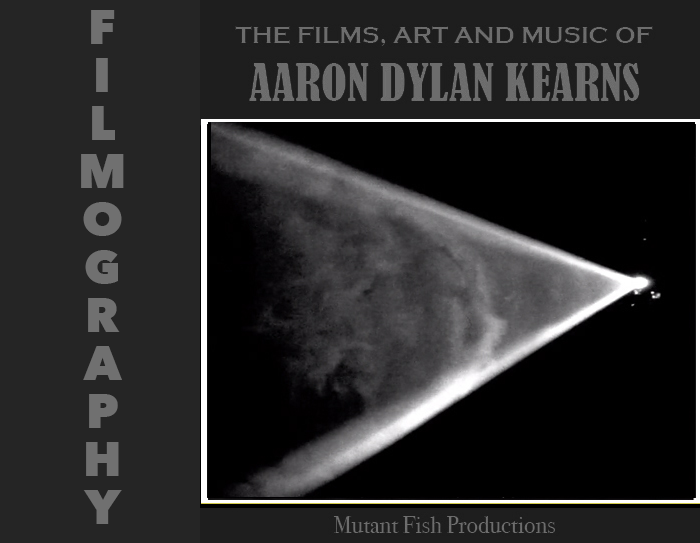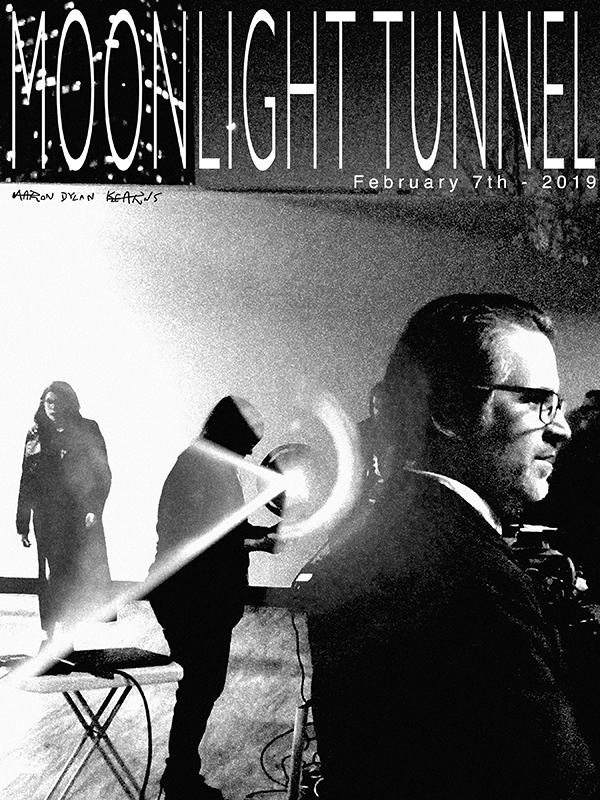Direction, cinematography, editing: by Aaron Dylan Kearns
Genre: Experimental documentary
Runtime: 13:27
Budget: $0
Release Date: February 9, 2019
Filmed with a smartphone camera.
Moonlight Tunnel: February 7th, 2019 is a documentary focusing on the setup and screening of an avant-garde film event, with arrangement and hosting by Andy Ditzler. The event was a triple-feature showing the progressive evolution of depth, motion and light in cinema. It began with a screening of Arrival Of A Train at La Ciotat, eventually comparing it and a screening of Panoramic View of The Golden Gate with a GoPro motion video. Following that there was a screening of Paul Sharits' Shutter Interface, concluding on Anthony McCall's Line Describing A Cone, which was an interactive three dimensional screening that involved film being projected through fog.
Description from the Facebook page for the event, titled Light Motion Surface Depth Screen Room Viewer Projector:
After sixteen years and over 150 unique programs, the Film Love series is being honored by Atlanta’s High Museum of Art with a spring 2019 retrospective. Programs will be curated by Film Love founder Andy Ditzler, and will feature audience favorites and rediscovered gems from the series’ long history. The retrospective continues on Thursday, February 7, with a program on the subject of how motion pictures work. The selections stretch from the earliest days of cinema in the 1890s to two key works of the moving image from the 1970s.
Although audiences of the 1890s were well acquainted with light projections, and stories of spectators running away from the images in panic at early movie screenings are apocryphal, there is no doubt that cinema produced profound changes in how people saw and represented the world and their place in it. The Lumière brothers’ famous 1896 film of a train approaching the camera is an indelible image of the advent of the twentieth century. A few years later, filmmakers were attaching their cameras to the front of trains for visual joyrides that exploited cinema’s double illusion: the appearance of depth on a flat screen, and the transformation of a strip of still images into motion via the film projector. Alongside their popular appeal, the train films carried other implications, such as a loss of control for spectators who found themselves hurtling through space via the screen. This type of novelty motion picture continues today in the plethora of thrill-seeking GoPro camera videos of wingsuit flights and other risky adventures.
Film artists have long drawn inspiration from early cinema’s exploration of the magical-seeming properties of motion and depth through projected light. Rounding out our program is a series of 16mm film projections that demonstrate cinema’s basic properties with both artistic rigor and a sense of delight in the moving image. Something of a cult classic, Gary Beydler’s Pasadena Freeway Stills ingeniously uses film’s frame-by-frame nature to convert a California drive from frozen images to motion and back again. Cinema magician Ken Jacobs uses found footage from the Lumières’ early films to create a kind of 3D film through a visual phenomenon known as the Pulfrich Effect. (No elaborate technology is required for this; viewers will be provided small viewing filters to use in order to see the special effects.)
Two key moving image works of the 1970s take us further into the properties of film projection, and of the cinema space itself. Using projection as a kind of performance, Paul Sharits’ Shutter Interface requires two concurrently running 16mm projectors with side-by-side images; during the screening, the two frames gradually merge. This beautiful and unique film’s use of vibrant single color frames poses the question: what does cinema look like when there is no motion within the image and no illusory depth in the image? Finally, a special presentation of Anthony McCall’s widely acclaimed Line Describing a Cone brings the audience fully into the equation. Projected through fog, this film gradually forms a cone of light in the screening room, with which viewers may actively interact. Harkening back to the magical spectacles of early cinema, while at the same time creating a meditative, Zen-like atmosphere, Line Describing a Cone is an engaging and unforgettable experience.
Because of the unique projection properties of these films, the screening will take place inside the Woodruff Arts Center building in the Beauchamp C. Carr room, directly adjacent to the Rich Theatre.
facebook.com/groups/77666086329/The poster:



